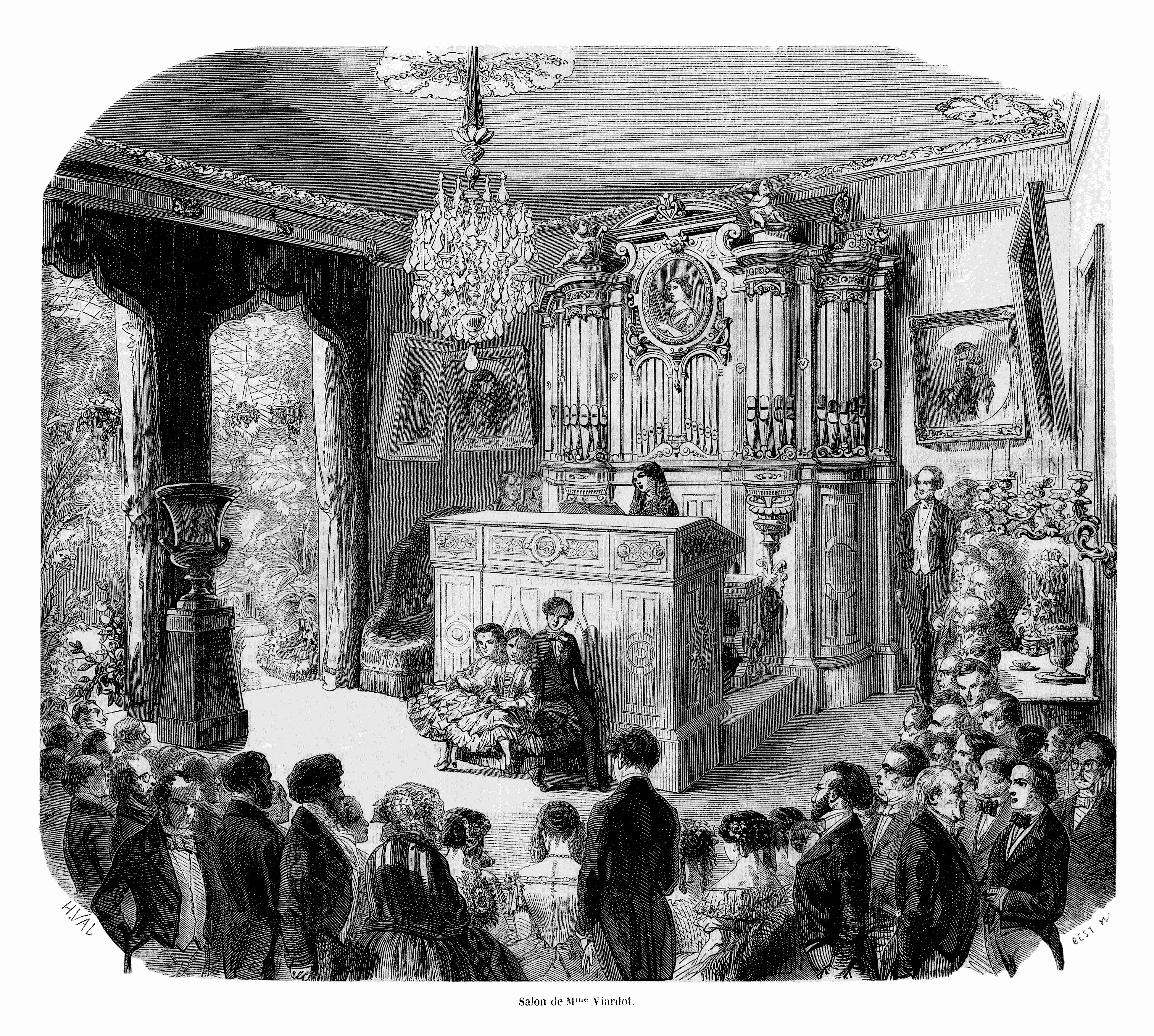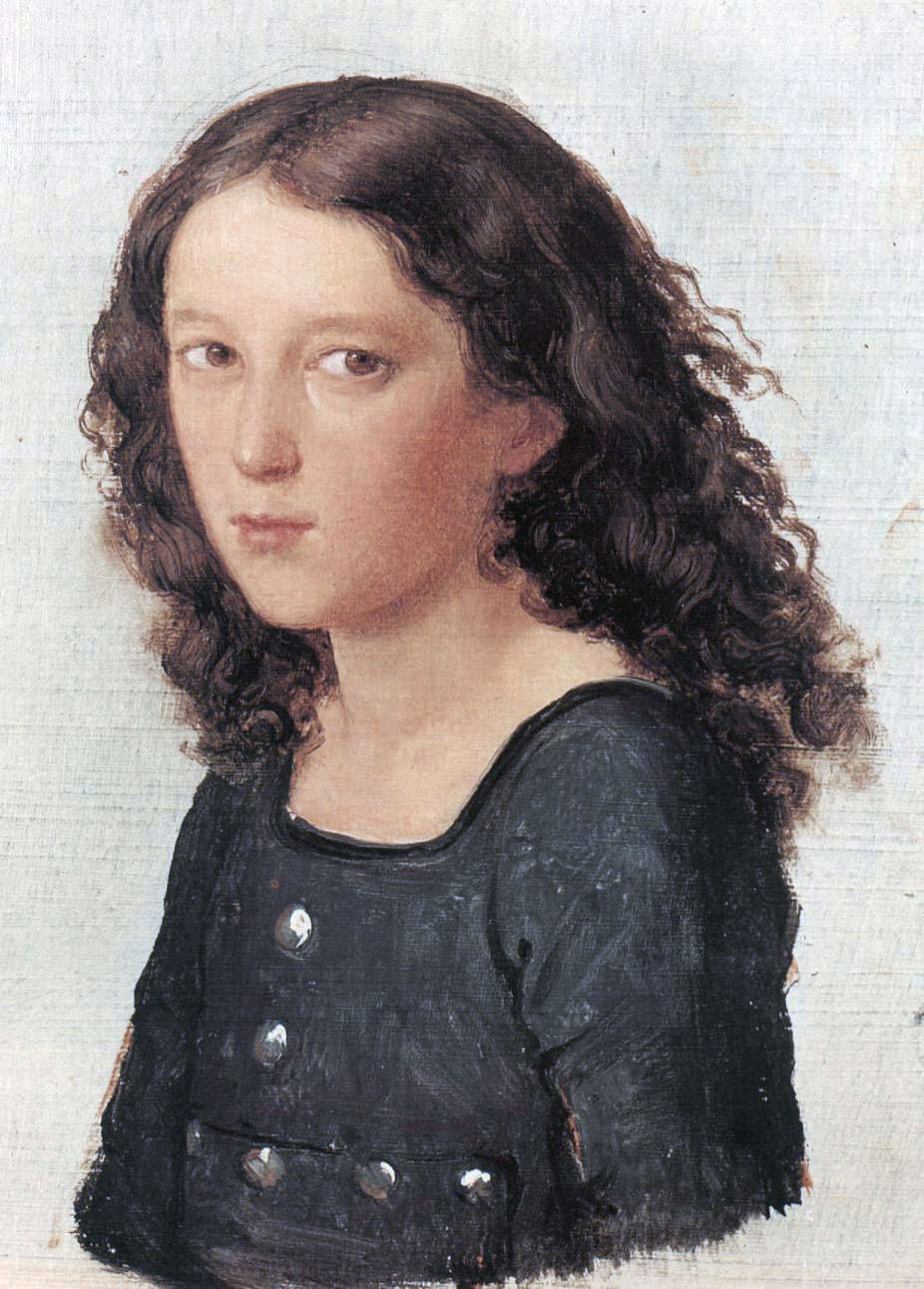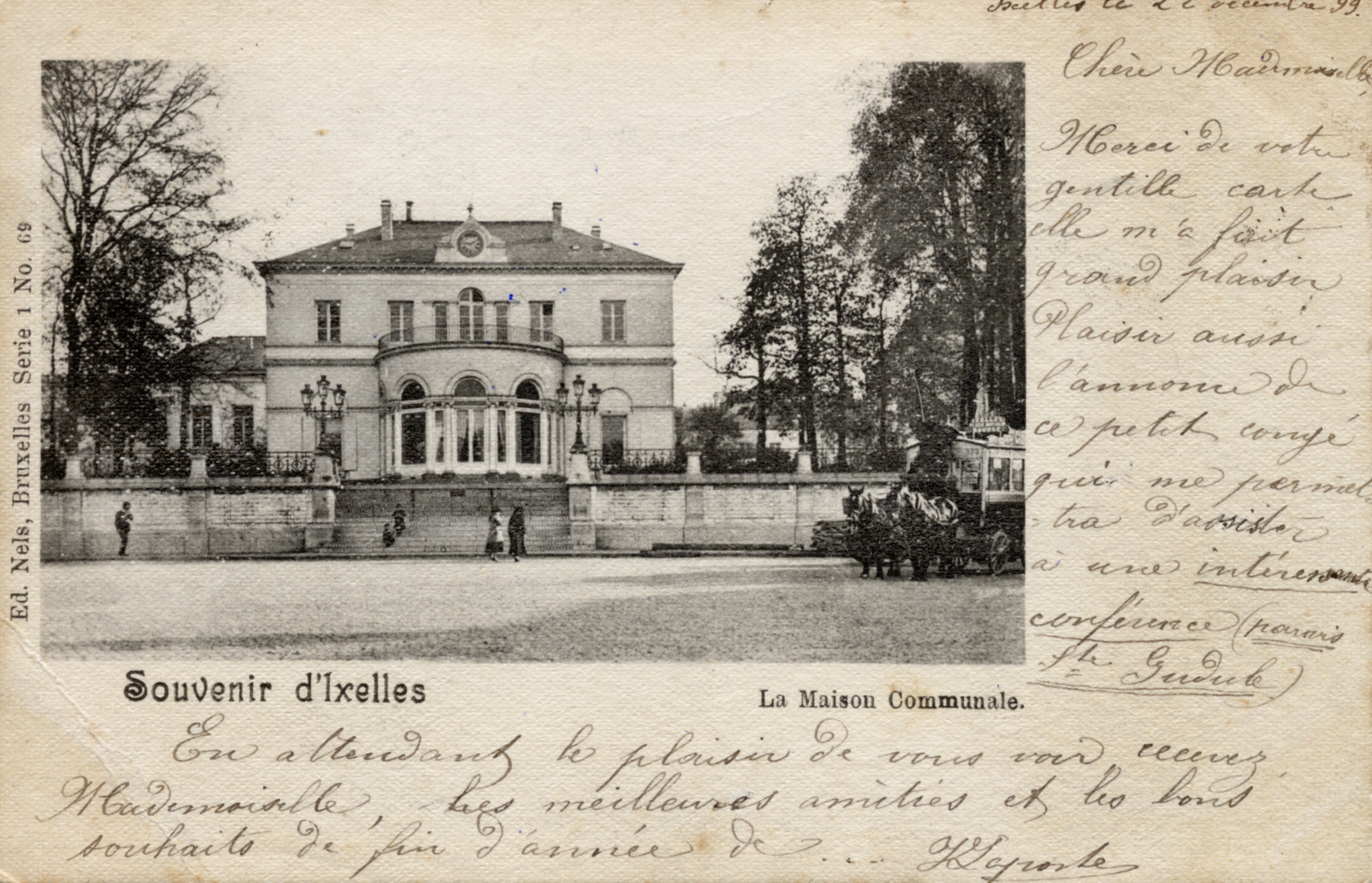|
Maria Feliciá Malibran
Maria Felicia Malibran (; 24 March 1808 – 23 September 1836) was a Spanish singer who commonly sang both contralto and soprano parts, and was one of the best-known opera singers of the 19th century. Malibran was known for her stormy personality and dramatic intensity, becoming a legendary figure after her death in Manchester, England, at age 28. Contemporary accounts of her voice describe its range, power and flexibility as extraordinary. Early life María Felicitas García Sitches was born into a famous Spanish musical family in Paris. Her mother was Joaquina Sitches, an actress and operatic singer. Her father Manuel García was a celebrated tenor much admired by Rossini, having created the role of Count Almaviva in his ''The Barber of Seville''. García was also a composer and an influential vocal instructor, and he was her first voice teacher. He was described as inflexible and tyrannical; the lessons he gave his daughter became constant quarrels between two powerful egos. ... [...More Info...] [...Related Items...] OR: [Wikipedia] [Google] [Baidu] |
Maria Malibran As Desdemona
''Maria Malibran as Desdemona'' is an 1830 portrait painting by the Belgian artist Henri Decaisne depicting the Spanish singer Maria Malibran. Malibran is depicted in the role of Desdemona from Gioachino Rossini 's opera ''Otello'', itself based on William Shakespeare's play of the same title. Decaisne was one of several French-based portraitists strongly influenced by the work of Thomas Lawrence in the 1820s. He submitted this work to the Royal Academy's 1830 Summer Exhibition at Somerset House. It was also exhibited at the Salon of 1831 at the Louvre. Today it is in the collection of the Musée Carnavalet in Paris Paris () is the Capital city, capital and List of communes in France with over 20,000 inhabitants, largest city of France. With an estimated population of 2,048,472 residents in January 2025 in an area of more than , Paris is the List of ci ..., having been acquired in 1924. References Bibliography * FitzLyon, April. ''Maria Malibran: Diva of the Romant ... [...More Info...] [...Related Items...] OR: [Wikipedia] [Google] [Baidu] |
Pauline Viardot
Pauline Viardot (; 18 July 1821 – 18 May 1910) was a French dramatic mezzo-soprano, composer and pedagogue of Spanish descent. Born Michelle Ferdinande Pauline García,FitzLyon, p. 15, referring to the baptismal name. Thbirth recorddigitized at Paris's ''État civil reconstitué (XVIe-1859)'' reads instead: "Michelle Pauline Ferdinande Laurence Garcia". she came from a musical family and took up music at a young age. She began performing as a teenager and had a long and illustrious career as a star performer. Name Her name appears in various forms. When it is not simply "Pauline Viardot", it most commonly appears in association with her maiden name García or the unaccented form, Garcia. This name sometimes precedes Viardot and sometimes follows it. Sometimes the words are hyphenated; sometimes they are not. She achieved initial fame as "Pauline García"; the accent was dropped at some point, but exactly when is not clear. After her marriage, she referred to herself simply as " ... [...More Info...] [...Related Items...] OR: [Wikipedia] [Google] [Baidu] |
Michael William Balfe
Michael William Balfe (15 May 1808 – 20 October 1870) was an Irish composer, best remembered for his operas, especially ''The Bohemian Girl''. After a short career as a violinist, Balfe pursued an operatic singing career, while he began to compose. In a career spanning more than 40 years, he composed at least 29 operas, almost 250 songs, several cantatas and other works. He was also a noted conductor, directing Italian Opera at Her Majesty's Theatre for seven years, among other conducting posts. Biography Early life and career Balfe was born in Dublin and grew up on Pitt Street, which was renamed Balfe Street in 1917 in his honour. His musical gifts became apparent at an early age, and he received instruction from his father, a dancing master and violinist, and from the composer William Rooke. Balfe's family moved to Wexford when he was a child. Between 1814 and 1815, Balfe played the violin for his father's dancing-classes, and at the age of seven composed a polacca. In ... [...More Info...] [...Related Items...] OR: [Wikipedia] [Google] [Baidu] |
Paris Opera
The Paris Opera ( ) is the primary opera and ballet company of France. It was founded in 1669 by Louis XIV as the , and shortly thereafter was placed under the leadership of Jean-Baptiste Lully and officially renamed the , but continued to be known more simply as the . Classical ballet as it is known today arose within the Paris Opera as the Paris Opera Ballet and has remained an integral and important part of the company. Currently called the , it mainly produces operas at its modern 2,723-seat theatre Opéra Bastille which opened in 1989, and ballets and some classical operas at the older 1,979-seat Palais Garnier which opened in 1875. Small scale and contemporary works are also staged in the 500-seat Amphitheatre under the Opéra Bastille. The company's annual budget is in the order of 200 million euros, of which €100M come from the French state and €70M from box office receipts. With this money, the company runs the two houses and supports a large permanent staff, wh ... [...More Info...] [...Related Items...] OR: [Wikipedia] [Google] [Baidu] |
Aria
In music, an aria (, ; : , ; ''arias'' in common usage; diminutive form: arietta, ; : ariette; in English simply air (music), air) is a self-contained piece for one voice, with or without instrument (music), instrumental or orchestral accompaniment, normally part of a larger work. The typical context for arias is opera, but vocal arias also feature in oratorios and cantatas, or they can be stand-alone concert arias. The term was originally used to refer to any expressive melody, usually, but not always, performed by a singer. Etymology The Italian term ''aria'', which derives from the Greek ἀήρ and Latin ''aer'' (air), first appeared in relation to music in the 14th century when it simply signified a manner or style of singing or playing. By the end of the 16th century, the term 'aria' refers to an instrumental form (cf. Santino Garsi da Parma lute works, ('Aria del Gran Duca'). By the early 16th century, it was in common use as meaning a simple setting of strophe, strophi ... [...More Info...] [...Related Items...] OR: [Wikipedia] [Google] [Baidu] |
Felix Mendelssohn
Jakob Ludwig Felix Mendelssohn Bartholdy (3 February 18094 November 1847), widely known as Felix Mendelssohn, was a German composer, pianist, organist and conductor of the early Romantic music, Romantic period. Mendelssohn's compositions include symphony, symphonies, concertos, piano music, organ music and chamber music. His best-known works include the Overture#Concert overture, overture and incidental music for ''A Midsummer Night's Dream (Mendelssohn), A Midsummer Night's Dream'' (which includes his "Wedding March (Mendelssohn), Wedding March"), the ''Symphony No. 4 (Mendelssohn), Italian'' and ''Symphony No. 3 (Mendelssohn), Scottish'' Symphonies, the oratorios ''St. Paul (oratorio), St. Paul'' and ''Elijah (oratorio), Elijah'', the ''The Hebrides (overture), Hebrides'' Overture, the mature Violin Concerto (Mendelssohn), Violin Concerto, the Octet (Mendelssohn), String Octet, and the melody used in the Christmas carol "Hark! The Herald Angels Sing". Mendelssohn's ''Songs W ... [...More Info...] [...Related Items...] OR: [Wikipedia] [Google] [Baidu] |
Annulment
Annulment is a legal procedure within secular and religious legal systems for declaring a marriage null and void. Unlike divorce, it is usually retroactive, meaning that an annulled marriage is considered to be invalid from the beginning almost as if it had never taken place. In legal terminology, an annulment makes a void marriage or a voidable marriage null.John L. Esposito (2002), Women in Muslim Family Law, Syracuse University Press, , pp. 33–34 Void vs voidable marriage A difference exists between a '' void marriage'' and a ''voidable marriage''. A void marriage is a marriage that was not legally valid under the laws of the jurisdiction where the marriage occurred, and is void '' ab initio''. Although the marriage is void as a matter of law, in some jurisdictions an annulment is required to establish that the marriage is void or may be sought in order to obtain formal documentation that the marriage was voided. Under the laws of most nations, children born during ... [...More Info...] [...Related Items...] OR: [Wikipedia] [Google] [Baidu] |
Charles-Wilfrid De Bériot
Charles-Wilfrid de Bériot (12 February 183322 October 1914) was a French pianist, teacher and composer. He was born in Paris in 1833, the son of the violinist Charles Auguste de Bériot and his then common-law wife, the famed soprano Maria Malibran (they were to marry when Charles-Wilfrid was three, but his mother died only three months later as a result of a fall from a horse, while pregnant with Charles-Wilfrid's sibling). Charles-Wilfrid was brought up mostly by his aunt, Pauline Viardot. His stepmother, Maria Huber, was an orphan who had been adopted by Prince von Dietrichstein, the alleged natural father of Sigismond Thalberg. Thalberg was one of Charles-Wilfrid's earliest teachers. He became a professor of piano at the École Niedermeyer, and later at the Paris Conservatoire, where his pupils included Maurice Ravel and Ricardo Viñes. His private students included Enrique Granados. As a teacher, he insisted on extreme refinement in tone production, which strongly influe ... [...More Info...] [...Related Items...] OR: [Wikipedia] [Google] [Baidu] |
Common-law Marriage
Common-law marriage, also known as non-ceremonial marriage, marriage, informal marriage, de facto marriage, more uxorio or marriage by habit and repute, is a marriage that results from the parties' agreement to consider themselves married, followed by cohabitation, rather than through a statutorily defined process. Not all jurisdictions permit common law marriage, but will typically respect the validity of such a marriage lawfully entered in another state or country. The original concept of a " common-law" marriage is one considered valid by both partners, but not formally recorded with a state or religious registry, nor celebrated in a formal civil or religious service. In effect, the act of the couple representing themselves to others as being married and organizing their relation as if they were married, means they are married. The term ''common-law marriage'' (or similar) has wider informal use, often to denote relations that are not legally recognized as marriages. It is o ... [...More Info...] [...Related Items...] OR: [Wikipedia] [Google] [Baidu] |
Charles Auguste De Bériot
Charles Auguste de Bériot (; 20 February 18028 April 1870) was a Belgian violinist, artist and composer. Biography Charles de Bériot was born in 1802 in Leuven, France (now part of Belgium) into a noble family but was orphaned at the age of nine. He was given to the custody of his music teacher and friend of his father, Jean-François Tiby (1772–1844). De Bériot began studying violin with Tiby, who trained him in the French style as exemplified by Giovanni Battista Viotti. In 1811 he performed for the first time in public, playing a concerto by Viotti. François-Joseph Fétis says that Tiby sent de Bériot to Paris at the age of 12 (1814), however de Bériot's own correspondence confirms that he only arrived in Paris in 1821. (This mistake is attributed to the advanced age at which Fétis wrote his final biographical note on de Bériot.) While in Paris, de Bériot studied briefly at the Paris Conservatory under Pierre Baillot and played for Rodolphe Kreutzer and Viotti. The ... [...More Info...] [...Related Items...] OR: [Wikipedia] [Google] [Baidu] |
Maria Malibran
Maria Felicia Malibran (; 24 March 1808 – 23 September 1836) was a Spanish singer who commonly sang both contralto and soprano parts, and was one of the best-known opera singers of the 19th century. Malibran was known for her stormy personality and dramatic intensity, becoming a legendary figure after her death in Manchester, England, at age 28. Contemporary accounts of her voice describe its range, power and flexibility as extraordinary. Early life María Felicitas García Sitches was born into a famous Spanish musical family in Paris. Her mother was Joaquina Sitches, an actress and operatic singer. Her father Manuel García was a celebrated tenor much admired by Rossini, having created the role of Count Almaviva in his ''The Barber of Seville''. García was also a composer and an influential vocal instructor, and he was her first voice teacher. He was described as inflexible and tyrannical; the lessons he gave his daughter became constant quarrels between two powerful egos. ... [...More Info...] [...Related Items...] OR: [Wikipedia] [Google] [Baidu] |
Royal Conservatory Of Brussels
The Royal Conservatory of Brussels (, ) is a historic conservatory in Brussels, Belgium. Starting its activities in 1813, it received its official name in 1832. Providing performing music and drama courses, the institution became renowned partly because of the international reputation of its successive directors such as François-Joseph Fétis, François-Auguste Gevaert, Edgar Tinel, Joseph Jongen and Marcel Poot, but more because it has been attended by many of the top musicians, actors and artists in Belgium such as Arthur Grumiaux, José Van Dam, Sigiswald Kuijken, Josse De Pauw, Luk van Mello and Luk De Konink. Adolphe Sax, inventor of the saxophone, also studied at the Brussels Conservatory. In 1967, the institution split into two separate entities: the , which teaches in Dutch, and the , which continued teaching in French. While the French-speaking entity remained an independent public institution of higher education (''École supérieure des arts''), the Flem ... [...More Info...] [...Related Items...] OR: [Wikipedia] [Google] [Baidu] |






